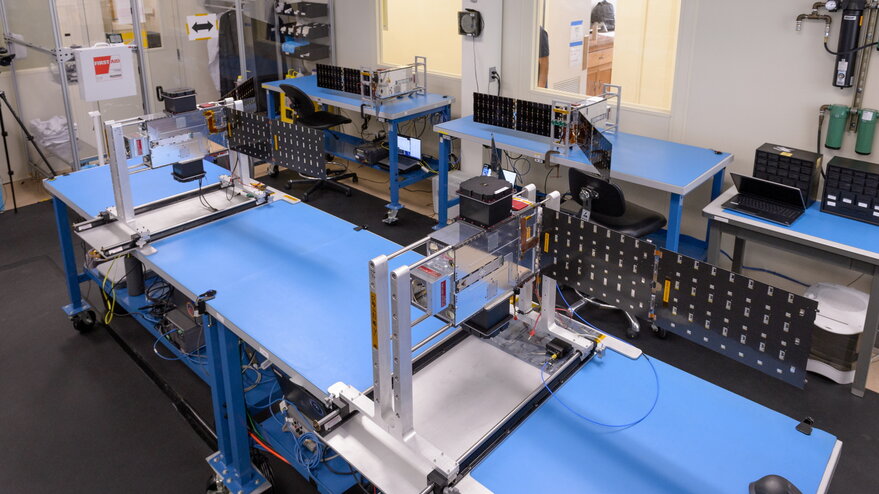SAN FRANCISCO – A NASA formation-flying experiment shows the promise of autonomous navigation for satellite swarms.
The four cubesats in the Starling Formation-Flying Optical Experiment, or StarFOX, calculate their orbits by combining visual images from star trackers with robotics algorithms.
“Such a visual-navigation system on a swarm of satellite can be used to navigate around Earth,” Simone D’Amico, Stanford University associate professor of aeronautics and astronautics and founding director of Stanford’s Space Rendezvous Lab, told SpaceNews. “Since we don’t use GPS, it can be used to fly around the moon or around Mars with an increased level of autonomy.”
Mission operators communicate with Starling, a swarm of four cubesats launched on a Rocket Lab Electron in July 2023, as a single entity. StarFOX is one of four experiments testing communications, navigation and autonomy technologies for future swarms.
Overall, Starling has shown enough promise for NASA to extend the mission. Starling, originally scheduled to conclude in May, has been extended until December 2025.
Artist’s impression of the Starling swarm. Credit: Blue Canyon Technologies/NASA
Blended Algorithm
Previous flight tests of vision-based navigation featured one observer satellite and one target. And the observer knew the target’s initial location.
StarFOX has shown it’s possible for four satellites to navigate autonomously “without a priori information and without maneuvers to improve navigation accuracy,” D’Amico said.
Key to the success of StarFOX are a set of algorithms called angles-only Absolute and Relative Trajectory Measurement System (ARTMS), according to a paper presented at the recent Small Satellite Conference in Logan, Utah. ARTMS combines algorithms for image-processing and initial orbit determination with an algorithm that refines estimates on the state of the swarm over time.
“We have learned what accuracies are achievable using typical star trackers used on smallsats,” D’Amico said. “And we have learned how we can improve that performance, for example, by exchanging these visual measurements that are taken by multiple observers.”
Starling satellites exchange data through inter-satellite links.
“If multiple observers see a common target in the field of view, exchanging these measurements and fusing them into our algorithms can determine more accurately and faster the orbit of that object,” D’Amico said. The data exchange also improves each satellite’s knowledge of its own orbit, he added.
Testing Required
StarFOX also demonstrated the importance of rigorous testing.
“We learned the importance of complete, hardware-in-the-loop testing done on the ground before flight,” D’Amico said. “In order to make it within the constraints of budget and time, we did individual unit tests and sacrificed some of the integrated tests that would have given us the full confidence on the execution of the experiments.”
Early in the Starling mission, flight software crashed. Through the use of an engineering model on the ground, a NASA Ames Research Center software engineer fixed the problem by allocating additional memory.
